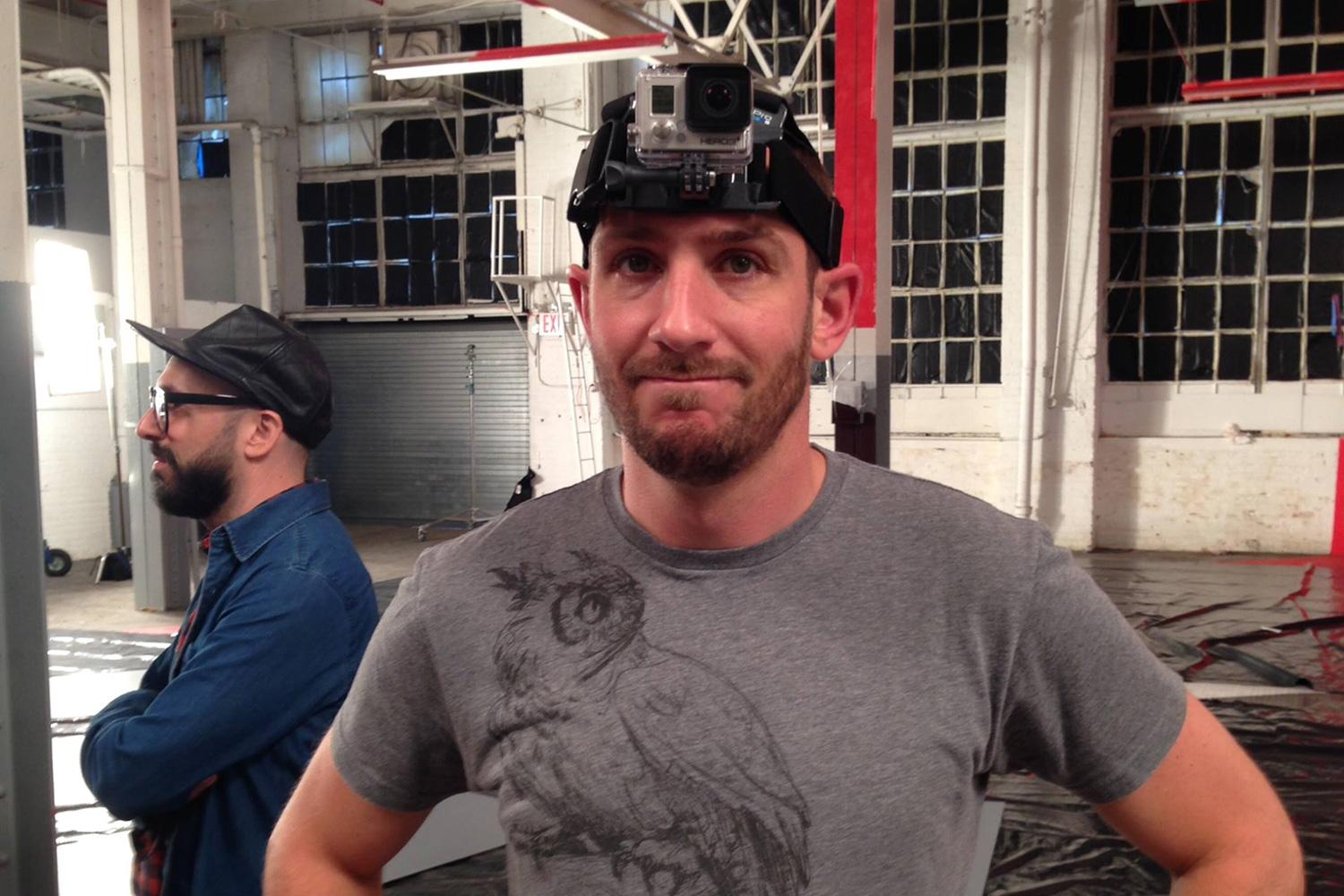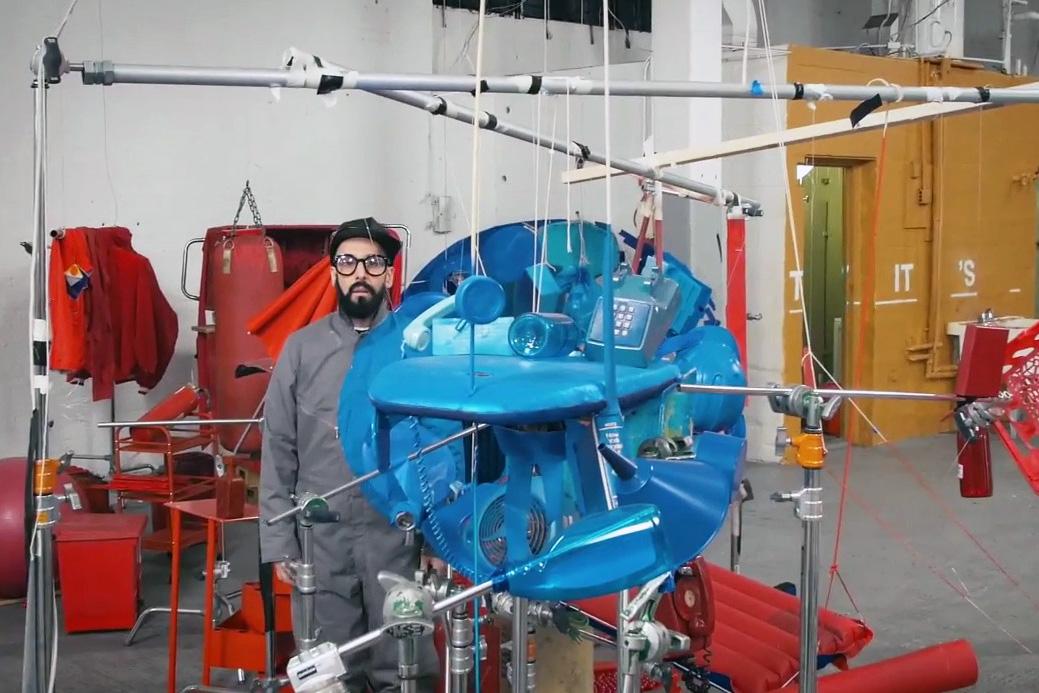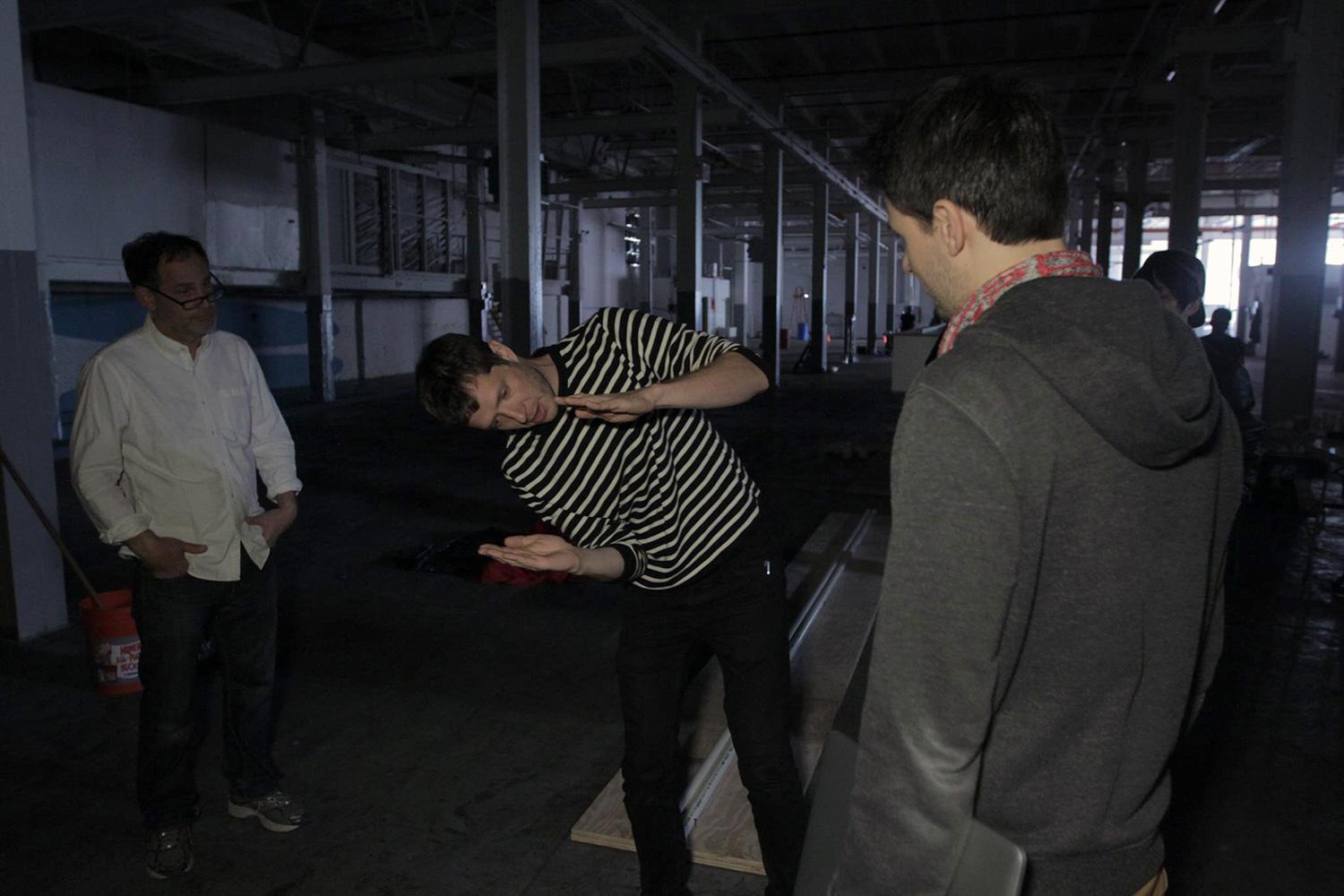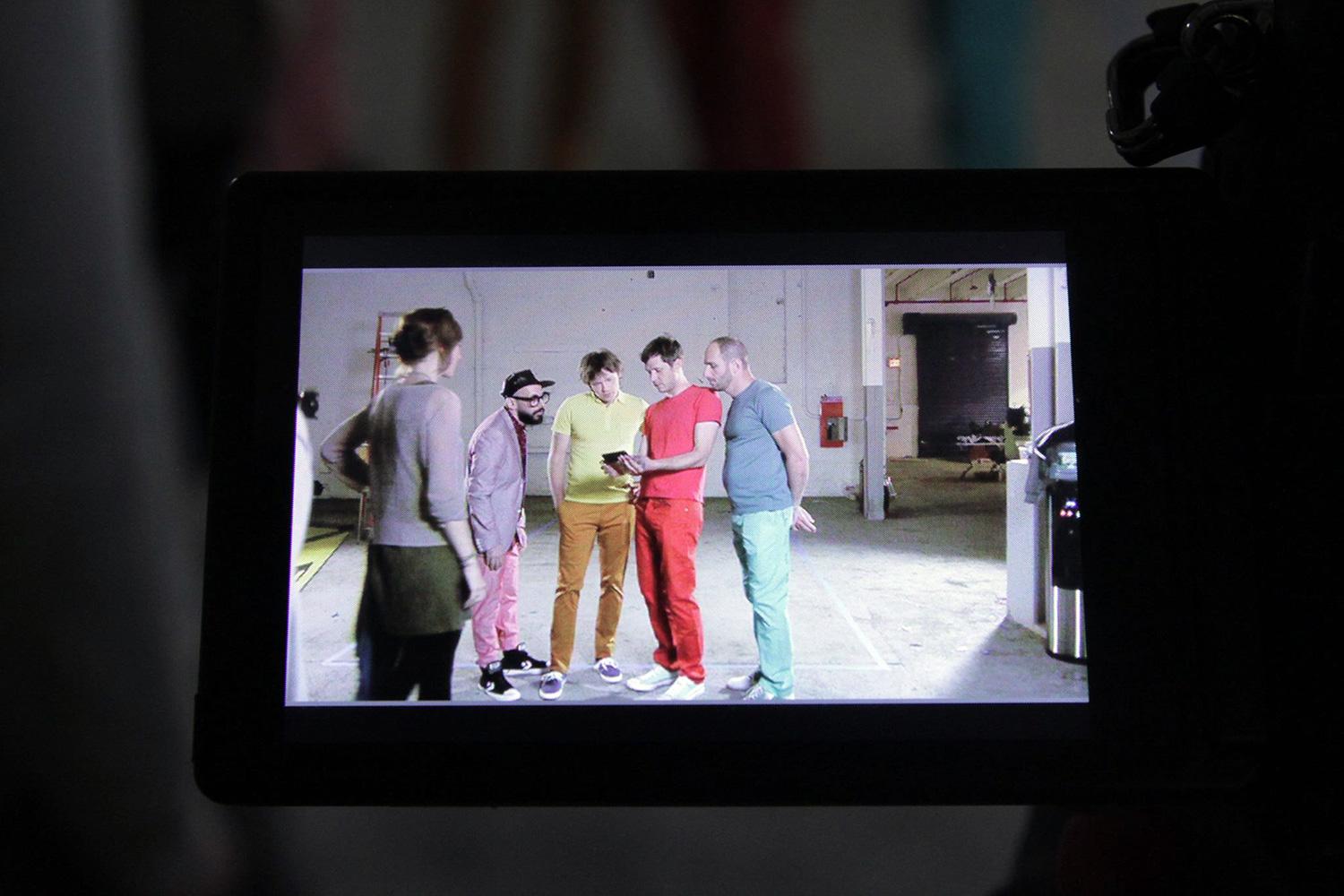Have you ever wondered how hard it is to make a music video in one straight take? The lead singer, and lead director of OK Go speaks out about the band’s latest video The Writing’s on the Wall.
Ever since OK Go hopped on a few treadmills in 2006 and cheaply filmed an intricately choreographed routine before a backdrop of plastic sheets in one continuous take, all to help promote its single, Here It Goes Again, the band’s name has become just as synonymous with quirky music videos without cuts. And frontman Damian Kulash is A-OK with those associations.
“It’s fun for us, because we love making them,” Kulash says of the videos. “They’re sort of Trojan horses for whatever type of art projects we feel like making. There’s this assumption that we must be bummed or ashamed that they’re such a huge part of who we are. I guess that reflects the world’s abiding thinking about creativity – that we’re still stuck in the last century, where musicians are people who play guitars and filmmakers are people who use cameras. In the world I’m living in, musicians and filmmakers both make 1s and 0s.”
Assembling a team, and thinking up crazy illusions
But in the world of OK Go, 1s and 0s still take a whole lot of real-world planning, practice, and patience, as evidenced by the band’s latest video, The Writing’s on the Wall, for which the quartet enlisted the help of 1stAveMachine to create a moving series of visual perspective illusions, shot (of course) in one take. And Kulash says finding the right collaborators was the first obstacle to overcome.
“When you’re making a video with dogs [and OK Go has made a video with dogs], you want to find the right dog people, but at least you know you’re looking for a dog trainer; whereas when you’re making something with anamorphic illusions, who do you call?” Kulash asks, noting plenty of directors did not see a music video as the type of “high art” they saw themselves making. “When we met with Aaron (Duffy) and Bob (Partington), it was a perfect fit. They had the right frame for it.”
“When you’re making something with anamorphic illusions, who do you call?”
The crew from 1stAveMachine also thought a bit about for whom they were working, and just how important these music videos have become to the band’s identity.
“It was a lot of pressure, I think, because you see the sort of curve of success the band has had with their videos,” Duffy says. “Also, the videos themselves have been getting bigger and bigger – sometimes in scope, sometimes in context – and we didn’t want to be the ones to break that trend. And so there was a lot of pressure there.
“You also want to try to take a medium or a set of rules they’ve created – like doing it all in one shot and doing it practically – and also bring something new to that. The illusions part of that ended up being a really great way to do that, because, really, if you do a post-effected version of illusions, that’s really not exciting whatsoever. If you can help the audience understand this is done in real time and in real life and not post-effected, it’s really exciting to see that, because your eyes are actually deceiving you. It’s not quite the same as being in that space in person, but, as much as we can try to give the audience that perspective or that feeling that they were there, we tried to do that.
“That was one of the reason’s for having the band involved in moving the camera around, at least for some parts of the video, because the positioning of the camera is so important for some of these illusions to work, we felt we should give them the power to either get it right or get it wrong,” Duffy adds. “It’s an added challenge, but I think it added a lot to the film, as well.”
After landing on a core concept, setting up the illusions and continuity for the video actually came easily.
Related: Say the Same Thing: OK Go’s smartphone game is more than OK
“We had a lot of fun setting it up, actually, but it happened organically,” Duffy explains. “We chose the things we liked most, tried to figure out which things could help us build the most. We had some of the smaller illusions happen at the beginning, then tried to build up the more surprising illusions toward the middle and end. Each illusion came to us as we put them in place, because they were quite dependent on what the space was. It was basically just me, Bob, and Damian walking through the space and setting things up and working with our production designer, Ethan Tobman, to get them executed.”
The challenge of creating a video with no cuts
Finally figuring out what the video for The Writing’s on the Wall was going to be was the easy part, and for all intents and purposes just the tip of the iceberg. The difficulties came later.
“Some of them were more difficult to build; some of them were more difficult in the moment,” Duffy says of actually creating and filming the illusions. “Those usually weren’t the same thing.”
“Each illusion came to us as we put them in place, because they were quite dependent on what the space was.”
Duffy says the one that was most difficult to build was during the very last shot, which showsThe Writing’s on the Wall mural that came together. “It was just a really large amount of space to figure it out. It’s complicated, too, because you can only see that it’s working from that one point. So everyone’s just painting on the ground and hoping they’re painting in the right place, because they can’t really tell what they’re looking at. It wasn’t so paint-by-numbers as we’d hoped it would be; it had to be meticulously done. Doing (bassist Tim Nordwind’s) beard and doing the paint thing were definitely the ones that were hardest in the moment because of the reset time, and it was a messy process.”
The no-cut concept also proved difficult when transitioning from illusion to illusion with a camera that had to be moved into various positions.
“Technique-wise, there’s nothing necessarily brand new here that hasn’t been thought about or used since the Renaissance – in terms of perspective illusions and things like that, or anamorphic points of view,” Duffy says, noting it was the movement that made it all difficult. “We tried all sorts of things. To be honest, we really hoped we would find a technology solution to this, because we wanted the rig to be a movie rig, or some sort of Steadicam rig or something with gyroscopes, so that the band could move the camera but you could also have a steady shot. In the end, we didn’t find a good rig we could use that would allow us to do all the moves.”
Duffy says they tried putting gyroscopics on the rig, but those got finicky whenever the camera was turned upside-down. So instead of relying upon new technology solutions, the crew went back in time a bit.

“We got this steering wheel rig that I think people used a decade ago but don’t use it that much anymore,” Duffy explains. “We put the [Panasonic] GH4 in there – which is a nice, light 4K camera – and just took all the shaking and tried to stabilize it later. If anything, that’s something I want to look into more technology-wise – how we do what we did here, but with a true steady rig, because we had nothing to help stabilize on set. We just had to try to keep is as smooth as we could as human beings.”
Then came the band’s part – actually executing the illusions, choreography, and camera movements, all to the timing of the song. Duffy says, between rehearsals and actual filming tries, the band went through the set roughly 60 times, only a few of those capturing the entire routine in one take, with Duffy stopping the band many times along the way in the first-half to avoid resetting later illusions when a take was not just right. But the time the band finally nailed it, Duffy says everyone on the set threw out the original plans to withhold cheering, as well as their intention to just walk off-camera and play it cool.
Related: OK Go’s Lead Guitarist tells us all about what it’s like to make a #1 app on iPhone
“By the time 2 a.m. came around when we were shooting, everyone was so pumped when we would finish a take that we ended up just cheering and being excited anyway,” Duffy says. “When we chose the take that we chose for the final piece, I wondered if other people would be like, ‘Oh, this cheering is so ridiculous or lame.’ But we were just really excited that we actually got through it. Hopefully that sums up our feeling by the end of it.”
Keeping things fun
From a creative perspective, Kulash says that first full take also provided a breath of fresh air, allowing the band to loosen up and have some fun with the video.
“It feels utterly relieving – not only was I the director but I was also the person paying for it,” Kulash says of making it to the end. “So you’re on your last night, and there’s a lot of time and money on the line. If you don’t get the take, you just don’t have anything to show for it.
“Really, the first time we got a take that felt like it might be usable was sort of this watershed moment where we said, ‘Good, now we have something in the can. Now we don’t have to just get to the end of this. We can focus, calm down a bit, and get one that feels artistic, not just competent.’ So that dual feeling of ‘Good, now we can actually get down to the real work of this,’ on the one hand and ‘Good, now our money isn’t entirely wasted” on the other – those are a pretty big left-right combo of relief.”
“There’s an internal pressure to make things we are still excited about,” Kulash adds, talking about the band’s videos. “I think we’d be hard-pressed to do a video dancing in the backyard that actually felt good to us now. Whereas five years ago, that was different … I didn’t think this last one was a huge upping of the ante. It certainly took a lot of work, but a lot of them have taken a lot of work. The world seems to be receiving it as a whole new level, which is great. Maybe we actually made something better.”
(Media © OK GO)






